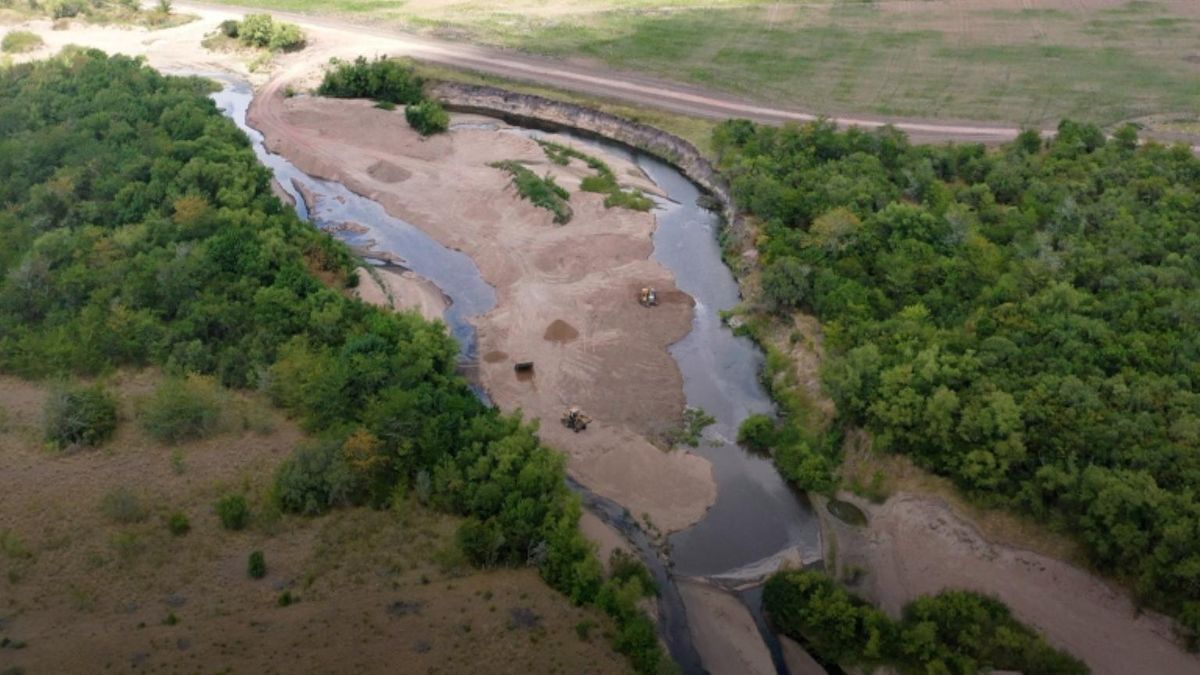Uruguay is going through the worst water crisis in the last century and was waiting for rains that could improve the state of the basins that provide drinking water to the metropolitan area that has its supply more compromised every day, although the rains arrived, the state of the Saint Lucia account continues being worrisome; while OSE builds an emergency dam near the Aguas Corrientes plant.
He Uruguayan Institute of Meteorology (Inumet) reported that between Friday of last week and Saturday, the Santa Lucía basin received 2 millimeters of water, while between Saturday and Sunday the record was 0 mm. On the other hand, it did not rain at the OSE intake of Aguas Corrientes, which supplies the metropolitan area and Montevideo.
With this, the rains were totally insufficient to fill the low levels that the Santa Lucía basin currently presents. Although, the Inumet forecasts rains and storms for next Wednesday, mainly in the south of the country, which could last until Thursday and Friday.
an emergency work
This Friday the construction of a new emergency dam began on the Santa Lucía river on the Belastiquí pass10 kilometers from the plant of running waters – the one in charge of supplying the metropolitan area – and which seeks to guarantee the mixture of fresh and salt water.
The dam seeks to mix the waters of the Santa Lucía river – which provides fresh water – with that of the Rio de la Plata – which provides salty water – with the aim of temporarily solving the minimum levels of the Paso Severino dam. An official statement from OSE establishes that the objective “is create a water reservoir from the Santa Lucia River between both dams”.
“To retain the water that comes from the Rio de la Plata at high tidethis new earthen dam was devised in Paso Belastiquí and to operate it in such a way that, at high tide, said dam opens partially and enables the passage of water from the Río de la Plata to the section between the dam in Belastiquí and the Aguas de Aguas dam. Corrientes and, at low tide, the Belastiquí Dam is completely closed and prevents the water that has entered that section from returning to the Río de la Plata and, therefore, it will be retained in that section as a reservoir, to be pumped into the reservoir.” , OSE specified.
What does OSE say?
For his part, the general manager OSE, Arturo Castagninoin an interview with Telemundo, established that “Ose took the measure to maintain the continuity of supply to protect the population from biological risks”, although he admitted that there are “other chemical risks and others” but that they are secondary.
In addition, he brought peace of mind to the population by establishing that the company will “continue providing supplies, this will not end within 15, 10 days because the transfer is going to continue and we are going to maintain the supply continuously until it rains”. And he assured that “in this country there is no waterborne disease because OSE exists.”
On the other hand, he referred to the wear and tear on the company’s facilities and explained that “the speed of deterioration is higher than the speed of the interventions” and “there is a national program that runs all at the same time, but the investment that’s what they are for 400 million dollars” where some losses “cost more than the loss itself”.
Source: Ambito




